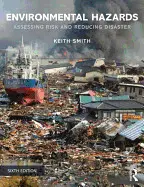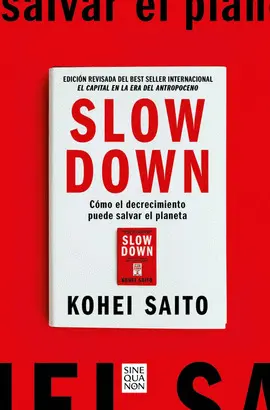- Editorial:
- ROUTLEDGE
- Materia:
- Ciencia - STEM
- ISBN:
- 978-0-415-68106-3
ENVIRONMENTAL HAZARS
ASSESSING RISK AND REDUCING DISASTER
KEITH SMITH
Biographical Note:
Keith Smith is Emeritus Professor of Environmental Science and former Dean of Natural Sciences at the University of Stirling. He is a Fellow of the Royal Society of Edinburgh.
Review Quotes:
"The latest edition of Environmental Hazards provides a reliable guide to the ever changing field of natural hazards and disasters. The sixth edition covers a remarkable range of interdisciplinary topics in an accessible manner. The text is a unique resource for anyone wanting to understand how human society on planet Earth often finds itself in peril, and what we can do about it." Roger Pielke, Professor of Environmental Studies, University of Colorado at Boulder, USA.
"Environmental Hazards has become the indispensable text for hazards students and scholars. The new edition brings together a wealth of updated and new case studies and examples. The common structure adopted for the chapters in Part II enables useful comparisons between hazard types and the varied risks and adaptation opportunities they present. This is a detailed and thorough treatment of the complex approaches to and challenges of hazard management." Dr Maureen Fordham, Enterprise Fellow Principal Lecturer in Disaster Management, University of Northumbria, UK.
"This is one of a minority that combines information on the range of disasters natural, biophysical and technological. It is also one of the only textbooks that provides a good general overview of the basic concepts important to the study of hazards such as disaster trends, risk management, vulnerability, mitigation/risk reduction, adaptation, etc. I would further argue that the language, case studies, suggestions for further readings, web links, etc. contribute to the book s pedagogical value for an undergraduate introductory text. If students have only one opportunity to learn about hazards in their undergraduate program then this book will indeed provide the basics ." Jessica Lehman - The University of British Columbia
"
Marc Notes:
Includes bibliographical references and index.
Table of Contents:
List of figures -- List of plates -- List of tables -- List of boxes -- Preface to the sixth edition -- Preface to the first edition -- Acknowledgements -- Part I. The Nature of Hazard -- 1. Hazard in the environment -- A. Introduction -- B. What are environmental hazards? -- C. Hazard, risk and disaster -- D. Earlier perspectives -- E. Current views: the complexity paradigm -- F. The organizational context -- 2. Dimensions of disaster -- A. Introduction -- B. Defining disaster -- C. Measuring disaster: archives -- D. Explaining disaster: time trends -- E. Explaining disaster: spatial patterns -- F. Managing disaster -- 3. Complexity, sustainability and vulnerability -- A. Introduction -- B. Complexity science -- C. Complexity and disasters -- D. An example: the Bam earthquake -- E. Sustainability and disasters -- F. Vulnerability and resilience -- G. Drivers of vulnerability and disaster -- 4. Risk assessment and management -- A. The nature of risk -- B. Risk assessment -- C. Risk perception and communication -- D. Risk perception in practice -- E. Risk management -- F. The role of information technology -- 5. Reducing the impacts of disaster -- A. Scoping the task -- B. Protection: hazard resistance -- C. Mitigation: disaster aid -- D. Mitigation: insurance -- E. Adaptation: preparedness -- F. Adaptation: predictions, forecasts and warnings -- G. Adaptation: land use planning -- Part II. The Experience and Reduction of Hazard -- 6. Tectonic hazards: earthquakes and tsunamis -- A. Earthquake hazards -- B. Earthquake behaviour -- C. Primary earthquake hazards -- D. Secondary earthquake hazards -- E. Protection -- F. Mitigation -- G. Adaptation -- 7. Tectonic hazards: volcanoes -- A. Volcanic hazards -- B. The nature of volcanoes -- C. Primary volcanic hazards -- D. Secondary volcanic hazards -- E. Protection -- F. Mitigation -- G. Adaptation -- 8. Mass movement hazards -- A. Landslide and avalanche hazards -- B. Landslides -- C. Landslides: cause and triggers -- D. Snow avalanches -- E. Protection -- F. Mitigation -- G. Adaptation -- 9. Severe storm hazards -- A. Atmospheric hazards -- B. The nature of tropical cyclones -- C. How tropical cyclones develop -- D. Tropical cyclone hazards -- E. Severe summer storms -- F. Severe winter storms -- G. Protection -- H. Mitigation -- I. Adaptation -- 10. Weather extremes, disease epidemics and wildfires -- A. Introduction -- B. Extreme temperature hazards -- C. The nature of disease epidemics -- D. Infectious diseases and climate -- E. Disease hazard reduction -- F. Wildfire hazards -- G. The nature of wildfires -- H. Wildfire hazard reduction -- 11. Hydrological hazards: floods -- A. Flood hazards -- B. Flood-prone environments -- C. The nature of floods -- D. Protection -- E. Mitigation -- F. Adaptation -- 12. Hydrological hazards: droughts -- A. Drought hazards -- B. Types of drought -- C. Causes of drought hazards -- D. Protection -- E. Mitigation -- F. Adaptation -- 3. Technological hazards -- A. Introduction -- B. The scale and nature of the hazard -- C. An outline of theory -- D. Technological hazards in practice -- E. Perception: the transport and nuclear industries -- F. Protection -- G. Mitigation -- H. Adaptation -- 4. Environmental hazards in a changing world -- A. Introduction -- B. The globalization of hazard -- C. Environmental change -- D. Air pollution and climate change -- E. Geophysical paths to disaster -- F. Climate change and environmental hazards -- Bibliography -- Index.
Publisher Marketing:
The much expanded sixth edition of "Environmental Hazards" provides a fully up-to-date overview of all the extreme events that threaten people and what they value in the 21st century. It integrates cutting-edge material from the physical and social sciences to illustrate how natural and human systems interact to place communities of all sizes, and at all stages of economic development, at risk. It also explains in detail the various measures available to reduce the ongoing losses to life and property. Part One of this established textbook defines basic concepts of hazard, risk, vulnerability and disaster. Attention is given to the evolution of theory, to the scales and patterns of disaster impact and to the optimum management strategies needed to minimize the future impact of damaging events. Part Two employs a consistent chapter structure to demonstrate how individual hazards, such as earthquakes, severe storms, floods and droughts, plus biophysical and technological processes, create distinctive impacts and challenges throughout the world. The ways in which different societies can make positive responses to these threats are placed firmly in the context of sustainable development and global environmental change.
This extensively revised edition includes:
A new concluding chapter that summarizes the globalization of hazard and critically examines the latest perspectives on climate-related disasters
Fresh perspectives on the reliability of disaster data, disaster risk reduction, severe storms, droughts and technological hazards
More boxed sections with a focus on both generic issues and the lessons to be learned from a carefully selected range of recent extreme events
An annotated list of key resources, including further reading and relevant websites, for all chapters
183 diagrams, now in full colour, and available to download on: www.routledge.com/9780415681063/
Over 30 colour photographs and more than 1,000 references to some of the most significant and recent published material.
"Environmental Hazards "is a clearly-written, authoritative account of the causes and consequences of the extreme natural and technological processes that cause death and destruction across the globe. It draws on the latest research findings to guide the reader from common problems, theories and policies to explore practical, real-world situations and solutions. This carefully structured and balanced book captures the complexity and dynamism of environmental hazards and has become essential reading for students of every kind seeking to understand this most important contemporary issue.








